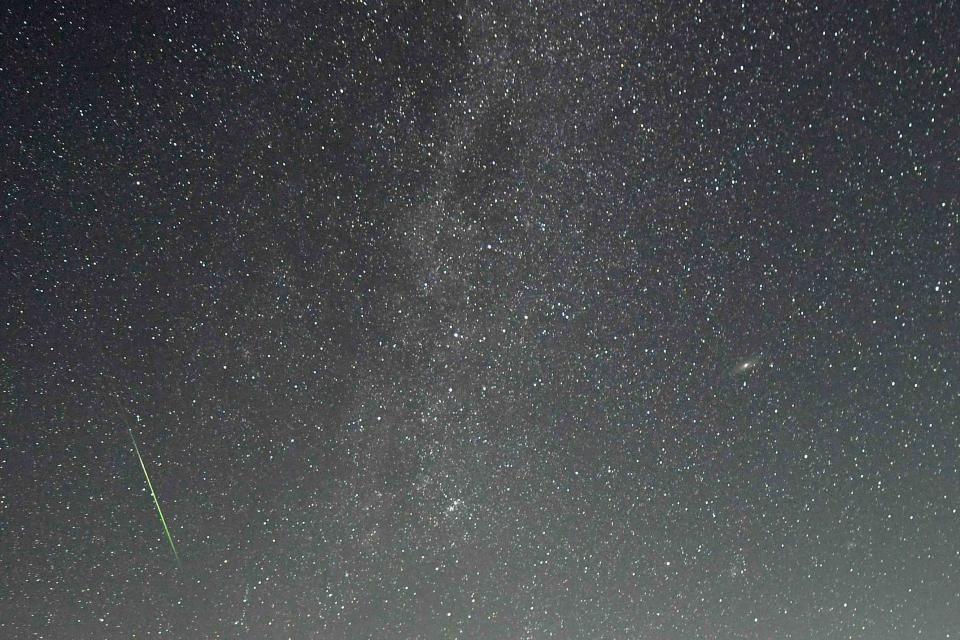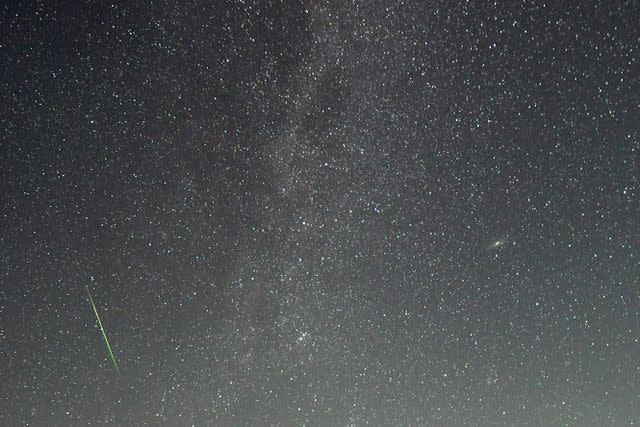2 Supermoons, a Meteor Shower, and a Saturn Sighting — Here's What to See in the Night Sky This Month
August will bring two supermoons, along with multiple planet sightings, the peak of a powerful meteor shower, and ideal star-cluster viewing.

Getty Images
July delighted stargazers with the year’s first full supermoon, and there’s more where that came from this August — a lot more. This month will see not one but two supermoons, along with multiple planet sightings, the peak of a powerful meteor shower, and ideal star-cluster viewing.
Summer is also an ideal time to spot the Milky Way, and its dynamic galactic core, in the northern hemisphere. To catch it, head out during a new moon — around August 16 — and head to a dark-sky viewing location, such as a national park.

Getty Images
Grab your binoculars, picnic blankets, and red-light flashlights: here are the best astronomical attractions for August 2023.
August 1: Full Sturgeon Supermoon
August’s stargazing begins with a bang as the Full Sturgeon Supermoon rises the evening of August 1. The moon, named for the fish that appear in the Great Lakes region this time of year, will look around 7 percent larger than the typical full moon. It will reach its largest size around 2:30 p.m. ET, but stargazers can watch for it just after the sun sets just before 9 p.m. ET in New York City, according to Space.com.
August 3: The Moon Approaches Saturn
In the pre-dawn hours of August 3, point your eyes high in the southwest sky to see a bright, waxing gibbous moon near Saturn. The two will travel toward each other within the Aquarius constellation and will lie within 2°15′ of each other, according to Space Tourism Guide.
Aug. 12-13: Perseid Meteor Shower Peak
The Perseid Meteor Shower, one of the strongest showers of the year, will reach its peak from Aug. 12-13. You can catch the entire shower throughout August, but its peak will generate 100-some meteors per hour for those watching beneath dark skies with minimal light pollution, according to NASA. The near-to-new moon, roughly 10 percent illuminated during the shower’s peak, will only add to the shooting-star visibility. To enjoy the shower, find a dark spot with wide-open nightscapes, and look toward the Perseus constellation in the east to northeast sky. The shower’s activity peaks around midnight on August 12 until dawn on August 13.
August 19: See Star Clusters
According to stargazing app SkySafari, August 19 is an ideal night for catching star clusters with your binoculars. Look to the southern sky between the Altair and Cebalrai stars to see three clusters well. You can find the shimmery white and reddish stars of the Summer Beehive Cluster one finger-width above the bright Cebalrai star. Halfway between Cebalrai and Altair you’ll find the Tweedledum Cluster, as well as Graff’s Cluster. The former is smaller but brighter, while the latter appears larger yet dimmer.
August 26-27: Saturn at Opposition
See Saturn during its closest approach to Earth, known as opposition, overnight from August 26-27. During this period, the planet will appear at its brightest and most visible. According to SkySafari, the ringed planet will stay illuminated by the sun and visible all night — it’s the brightest Saturn will get all year. Use a medium or large telescope to see Saturn and its moons up close.
August 31: Full Blue Supermoon
August will close the month with a grand finale: a full blue supermoon. A blue moon is the name for the second full moon in one calendar month. The sun will peak in size just after sunset and will be the closest, brightest, and fullest supermoon of 2023. We won’t enjoy a moon this close to Earth — 222,043 miles — until November 2025, according to The Old Farmer’s Almanac.
For more Travel & Leisure news, make sure to sign up for our newsletter!
Read the original article on Travel & Leisure.

